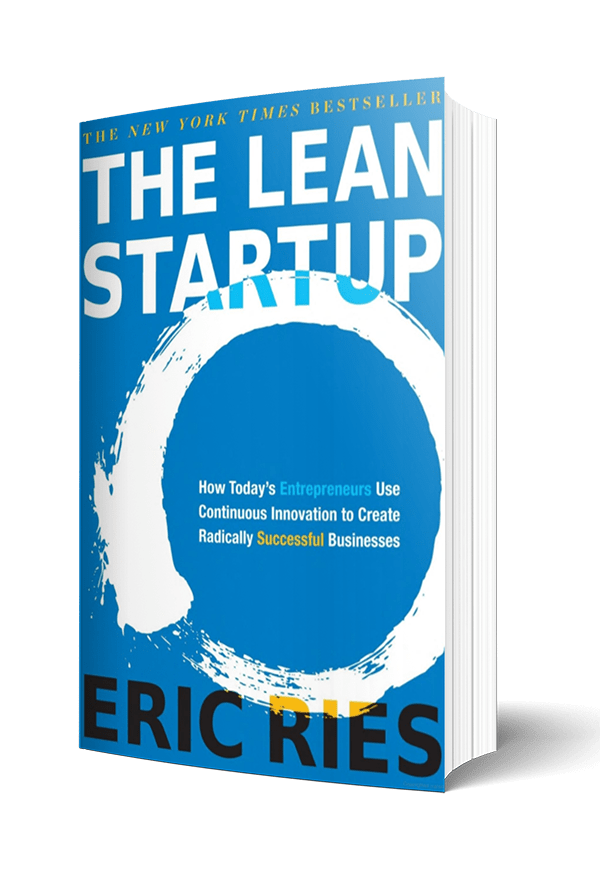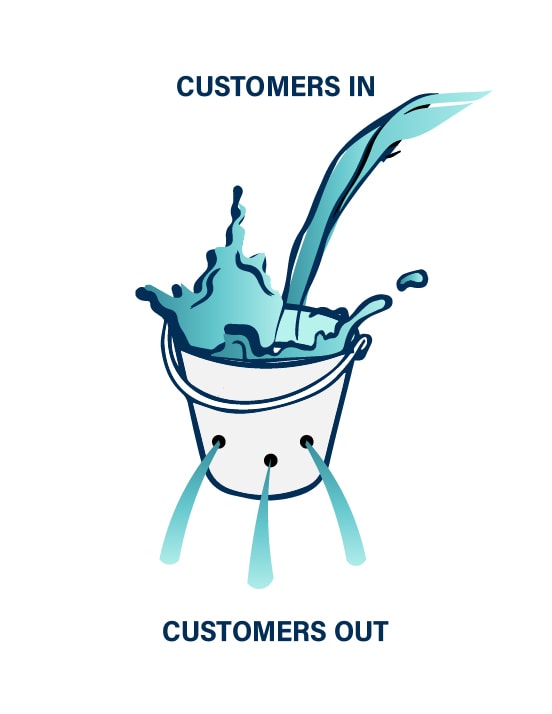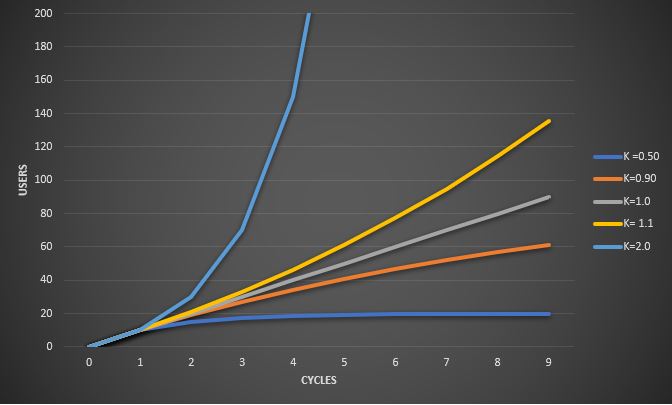The 3 Growth Engines Startup Businesses Use to Scale Fast
This publication is based off the ideas in “The Lean Startup,” by Eric Ries where he discusses these growth engines or “three drivers of business growth.”

Growth Engines Definition
Growth engines are free and paid marketing tools that you can use to help your business grow. Sticky growth engine, viral growth engine, and paid growth engine are the three most common and effective types of growth engines.
Share
The 3 Types of Growth Engines Introduction
I constantly see business owners attempting to reach out and cold call potential customers to convince them to buy their service or product with varying success. This method can work but it is not efficient if you want to scale your business. Implementing one of the three growth engines will outsource lead and customer acquisition allowing you to just focus on providing high-quality efficient products or services to them.
Choosing the best growth engine depends on your industry, product, and/or service that you offer. Read through each of the examples and types below to determine what is best for your niche. These methods can help your business obtain sustainable growth.
Sticky Growth Engine
Key Metrics
- Customer Acquisition Rate
- Customer Retention Rate
- Churn Rate
The Sticky Growth Engine is about keeping customer retention. When implementing this type of growth, you keep track of how many customers you keep, how long you keep them, and when they leave all in a set timeframe.
This growth is typically associated with subscription type businesses where customers pay every set day, month, year. Where you offer something of value that only continues to provide them value if they stay subscribed to you.
Churn rate is simply the users at a beginning of a period subtracted by the users at the end of that period divided by the users at the beginning of period. Example, (100 Users on the 1st.) – (90 Users on the 30th) / (100 Users on the 1st.) = 0.10 Churn Rate. Therefore, the lower the churn rate the better. Or in simpler terms you want to retain as many customers as possible.

A great way to represent this is a bucket that is filling with water at a set rate however, there are holes in the bucket that represents lost customers. Maintaining a greater flow into the bucket versus water lost through the holes will result in a scalable business. Thus, you would need to get a larger bucket.
In my opinion if you have a very low churn rate it could be very profitable to run paid ads and take a loss initially if you know it will pay off in the future. Be cautious and calculated when doing this through testing and proving those strategies before fully committing to them though.

Companies like Amazon, Netflix, and Costco are great examples of companies that base their growth from the sticky method. They know that if they can keep customers engaged, they will be loyal to their brand. This results in a greater lifetime value and keeps them connected with customers and thus have more influence over them.
Methods to improve sticky growth:
- Offer incentives or more value to those who subscribe longer.
- Improve and offer more value within the subscription.
- Send them reminders, thank you cards, special promotions.
- Offer return discounts for those who unsubscribe.
Paid Growth Engine
- Customer Lifetime Value (LTV)
- Cost Per Acquisition (CPA)
- Cost Per Click (CPC)
The paid growth engine is heavily dependent on paying large sums of money to keep this type of engine moving.
Total Amount Spent = the total amount of money used on the marketing activity.
Total Conversions = The amount of people that clicked, bought, etc. (You determine what your metric for conversion is. Ex, leads, sales, clicks.)
LTV can be complex as it can involve number of transactions and average value, retention time, profit margins, and churn rate. Overall, it represents the total amount of money a customer is likely to spend with your business in their lifetime.
CPC is also known as PPC (Pay Per Click) and this type of paid ad is typically associated with Google Ads. For Example,
You decide to use Google Ads and pay per click (PPC) as a result you get featured at the top of the webpage for your desired keywords that are chosen to target your audience.
Let us pretend the cost per click (CPC) is $1.00 and every 100th click is a buyer. And on average each buyer spends $500 which is $150 profit after non-ad related expenses. Therefore, it will cost $100 to get a buyer that pays $500 and $150 (profit) – $100 (ads) = $50 Profit.
That is an average profit of $0.50 per click.
If you put $1 into paid ads and you get $0.01 back in profit or more, you have a money printer. If the variables all remain constant and you can handle the explosive growth without taking on additional expenses you and if you have the capital this type of growth could be ideal for you.
You should investigate and determine the best source that provides the largest profit per click. These are some of the best advertising platforms to run ads:
- Amazon
Viral Growth Engine
- Viral Coefficient
This type of growth typically occurs through.
- Referrals
- Word of Mouth
- Social Media
- Sharing Content
U(c)= The number of users at each cycle.
U(0)= The starting number of users
K= Viral coefficient
C= Cycle number
Here is an example of the power of varying K factors. “K” can be calculated through the formula.
K=(I) Invites x (%) Conversion
Example,
K= (8) x (1/4) = 2.

Each person that shares results in eight new people or “invites” and every fourth person shares it on social media therefore, it results in one in four people or 25% conversion rate. Our example above therefore has a viral rate (K) of two.

Just by looking at the graph you can tell why so many start-ups spend so much time and energy attempting to create viral growth. For instance, just having a 1.2 K-Factor throughout a period of a year starting with one thousand users would result in over sixty-five million users in just a year. It is easier said than done, however. The K-Factor is constantly changing based on trends, seasonality, and many other factors.
Get the FREE
Viral Growth Calculator

Methods to improve viral growth:
- Create valuable content and promote it on social media sites.
- Have an amazing referral program.
- Add incentives for signing up or subscribing.
- Offer immediate free “valuable” offers to clients to attract them to your other offers. Also called a lead magnet.
The book “The Lean Startup” by Eric Ries is not only about creating a more successful business through these drivers of growth. The book is mostly focused on the idea of saving resources (money, time, effort) through rigorous testing of an idea then pivoting or tweaking the systems within it. Ultimately, The Lean Startup is about learning through testing and applying what we learn in the early phases of a start up before investing and going all out into developing the idea. Eric Ries’s book is all about efficiency and any business owner can benefit from reading it.
If you have an idea you want to test through a website landing page with different features such as ecommerce functionality. Contact [email protected] or reach out via our chat bubble in the right corner of our website. If we still offer it you can also schedule a call on the website. We can help you make your vision a reality without breaking the bank.
You have nothing to lose. Everything left to gain.
We will talk about your business and how we can help to achieve your goals.





